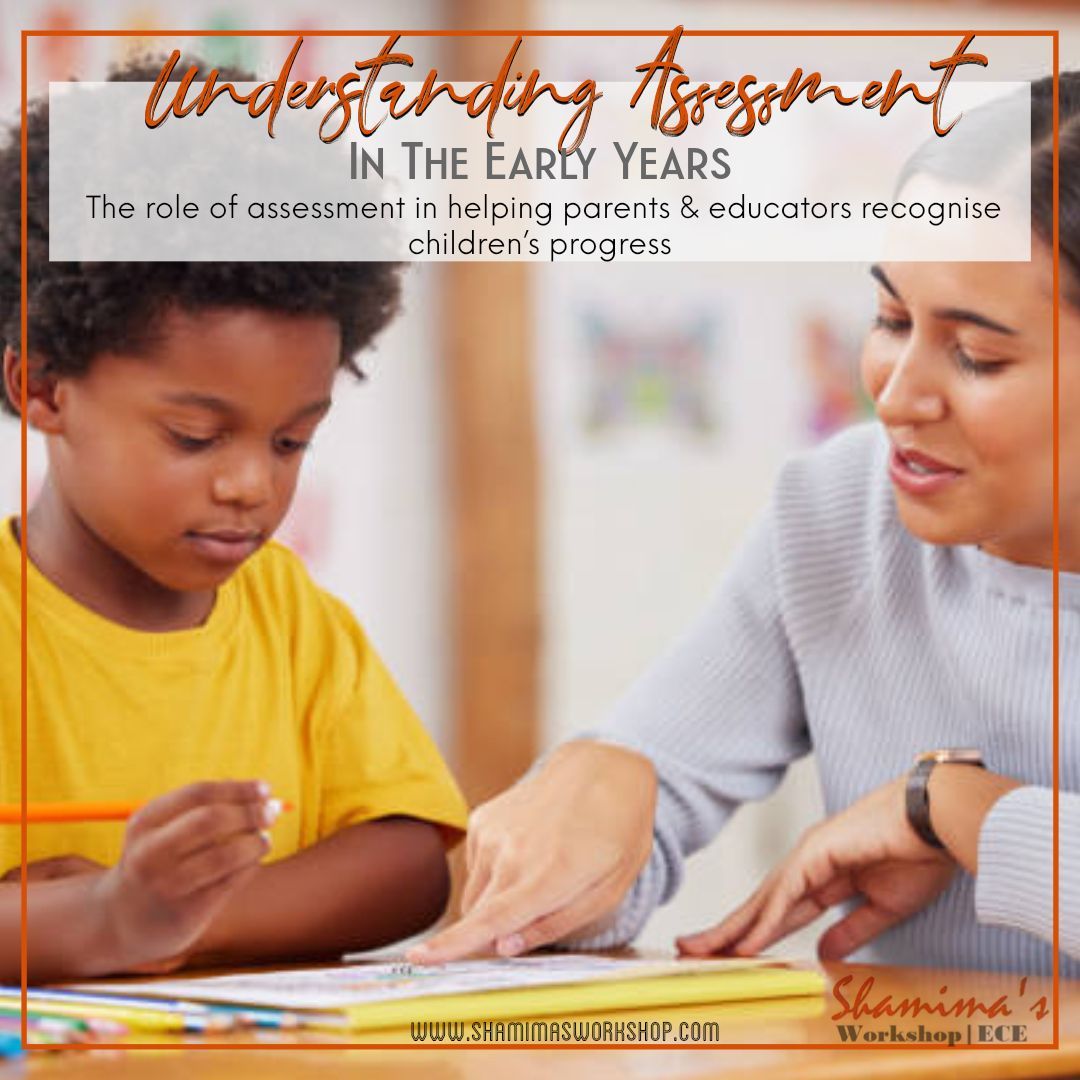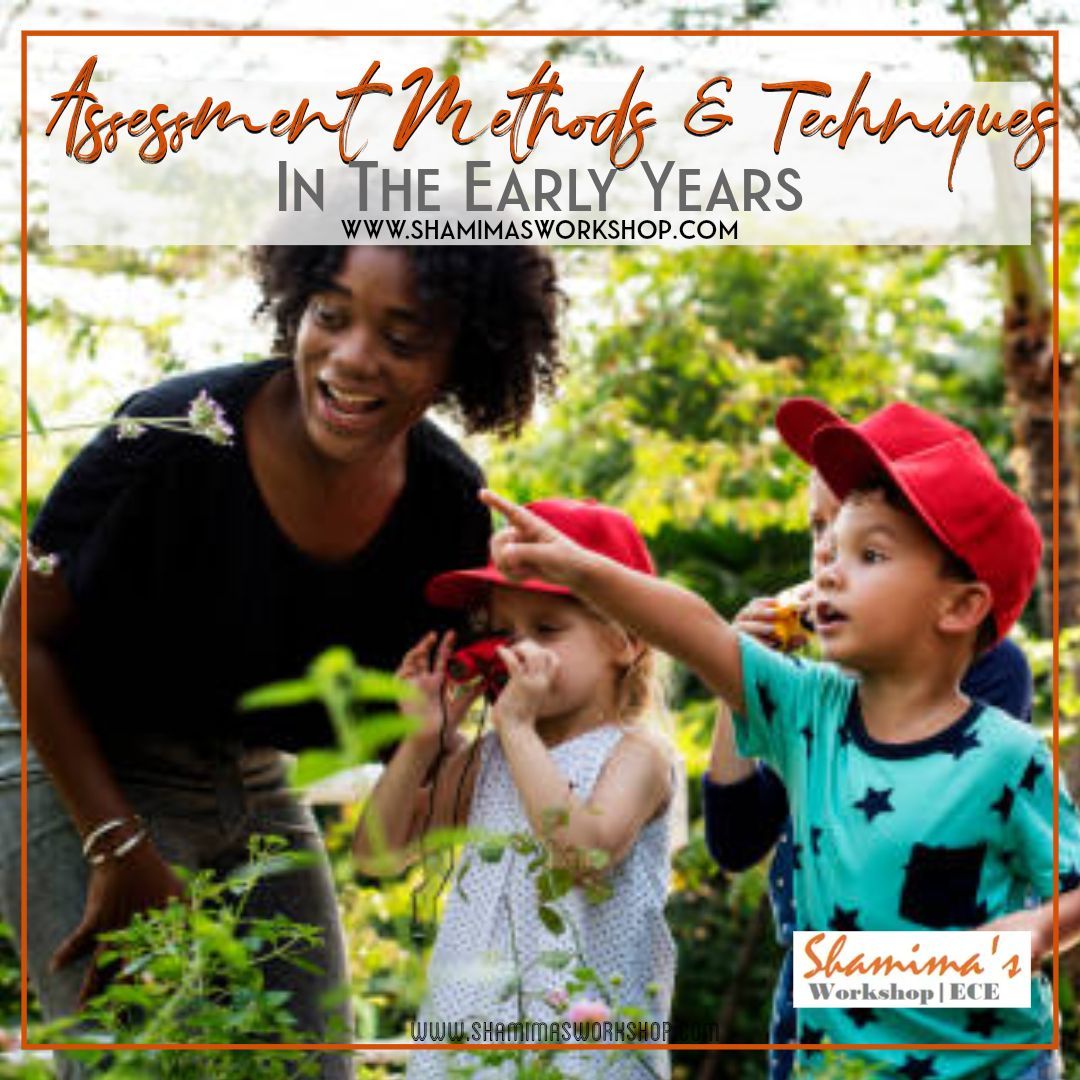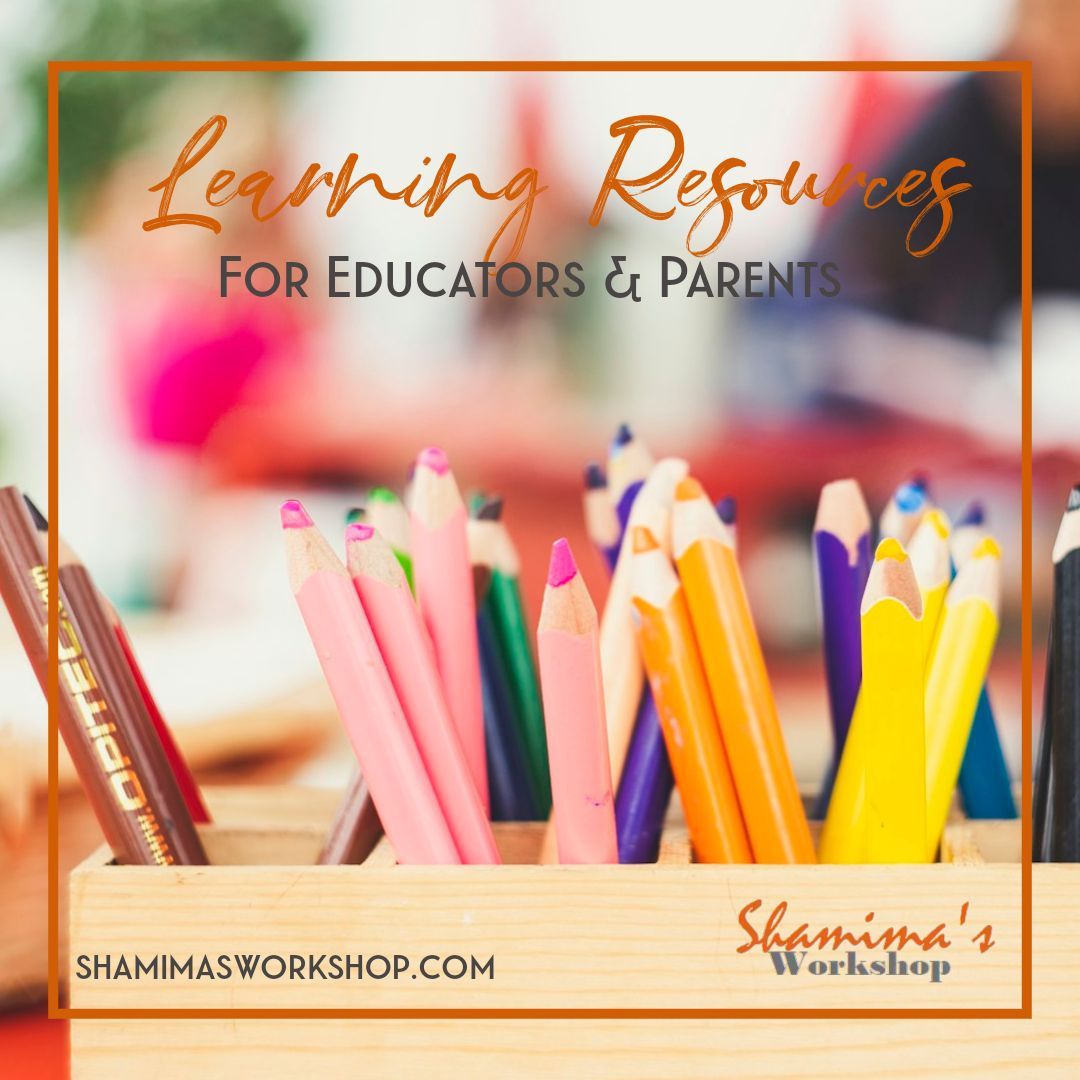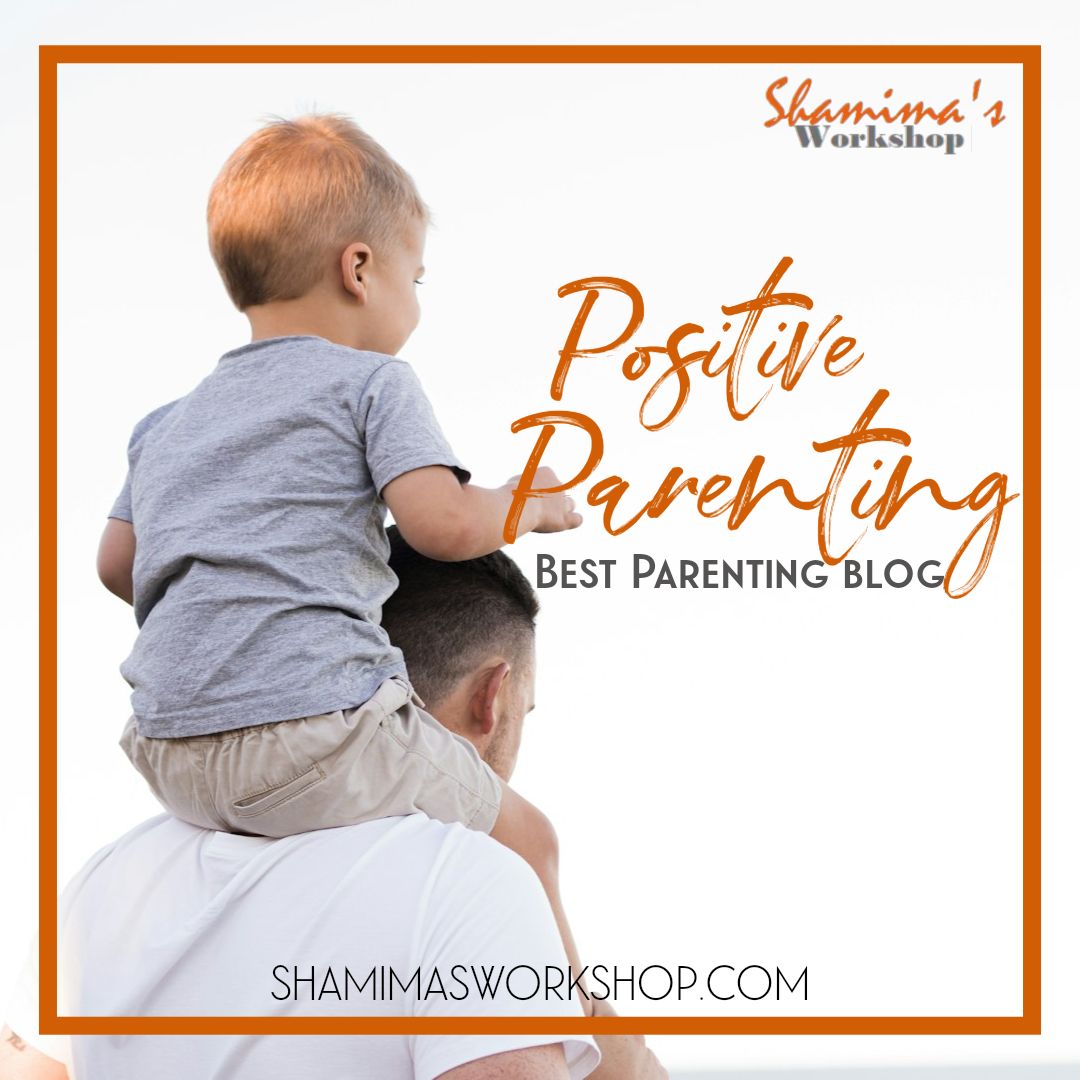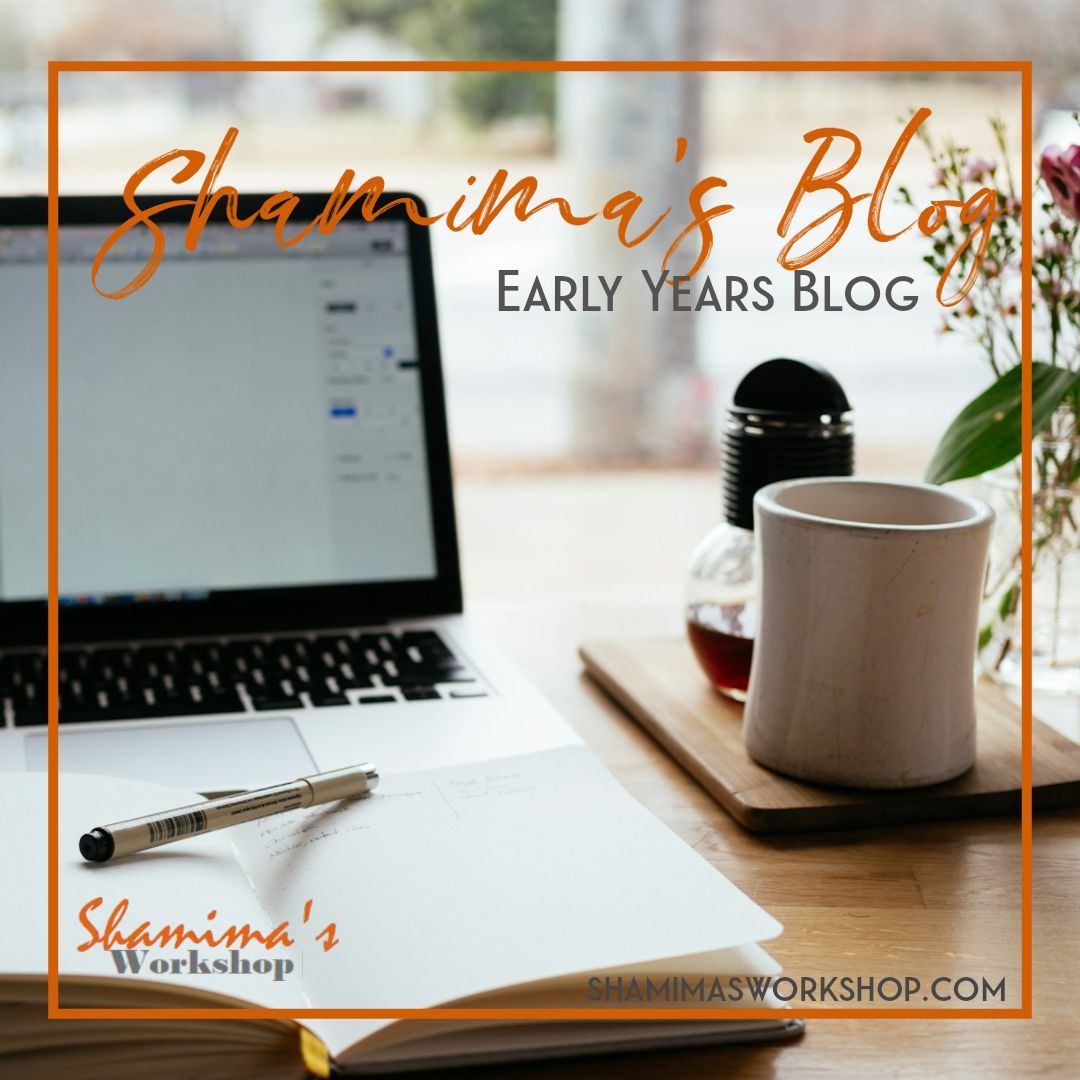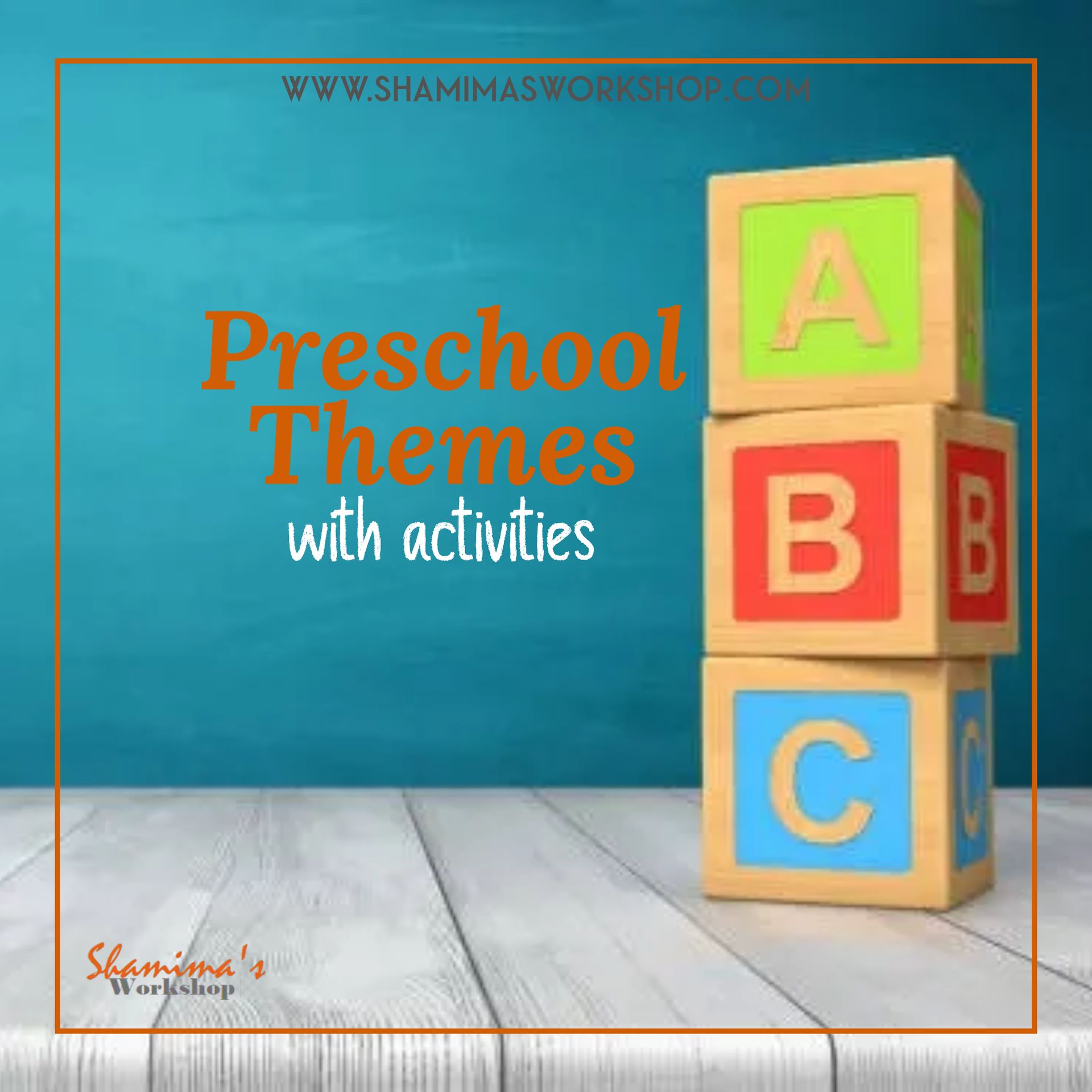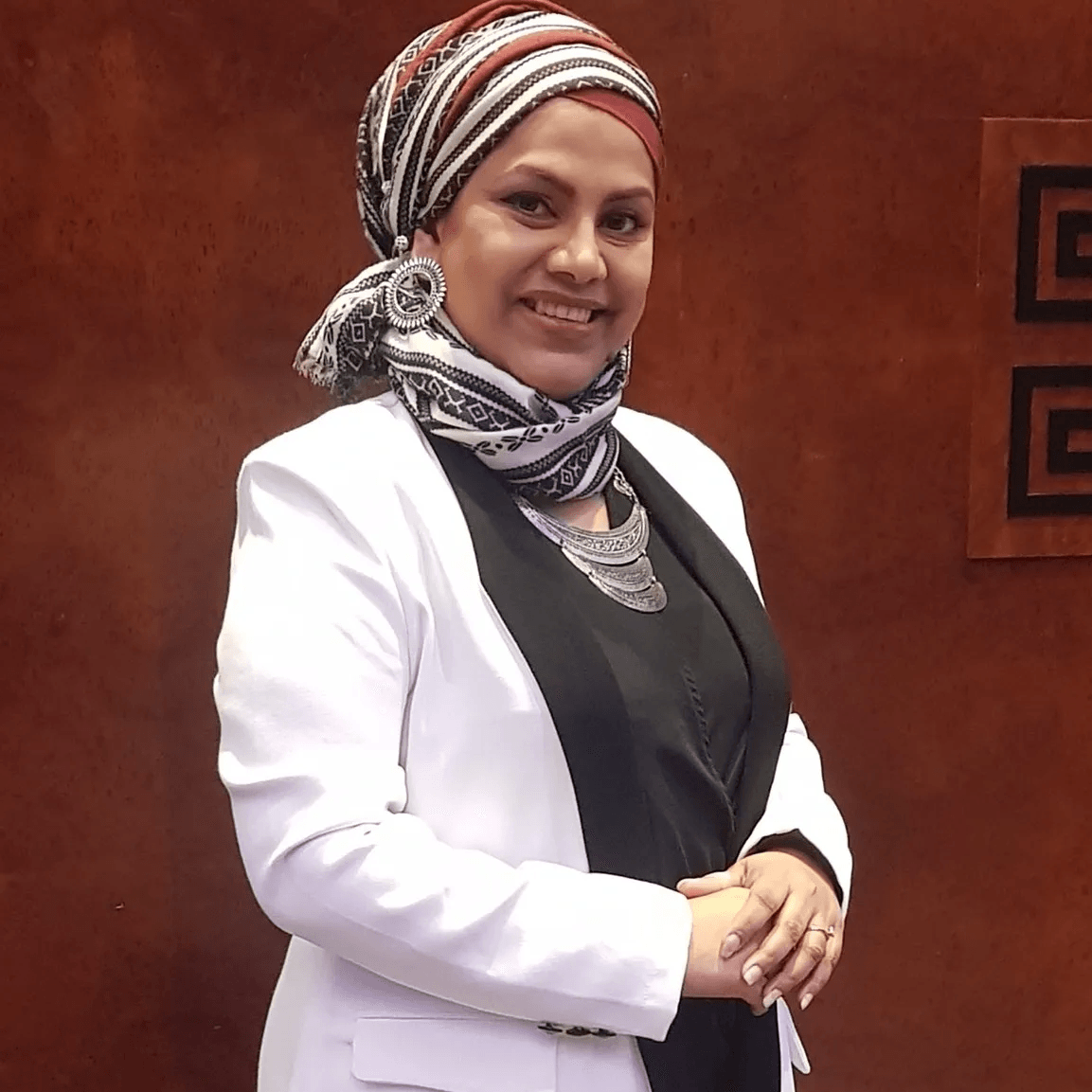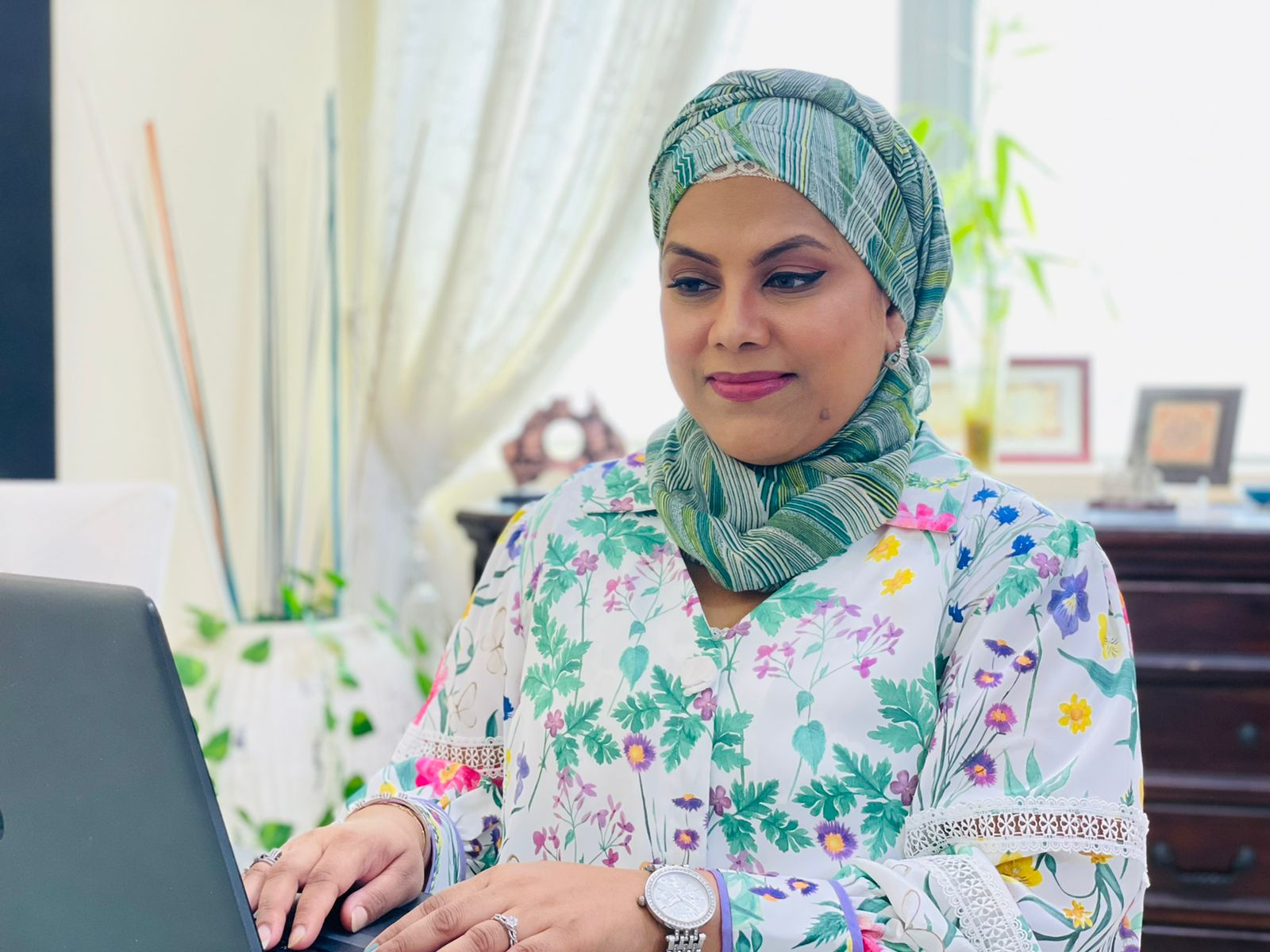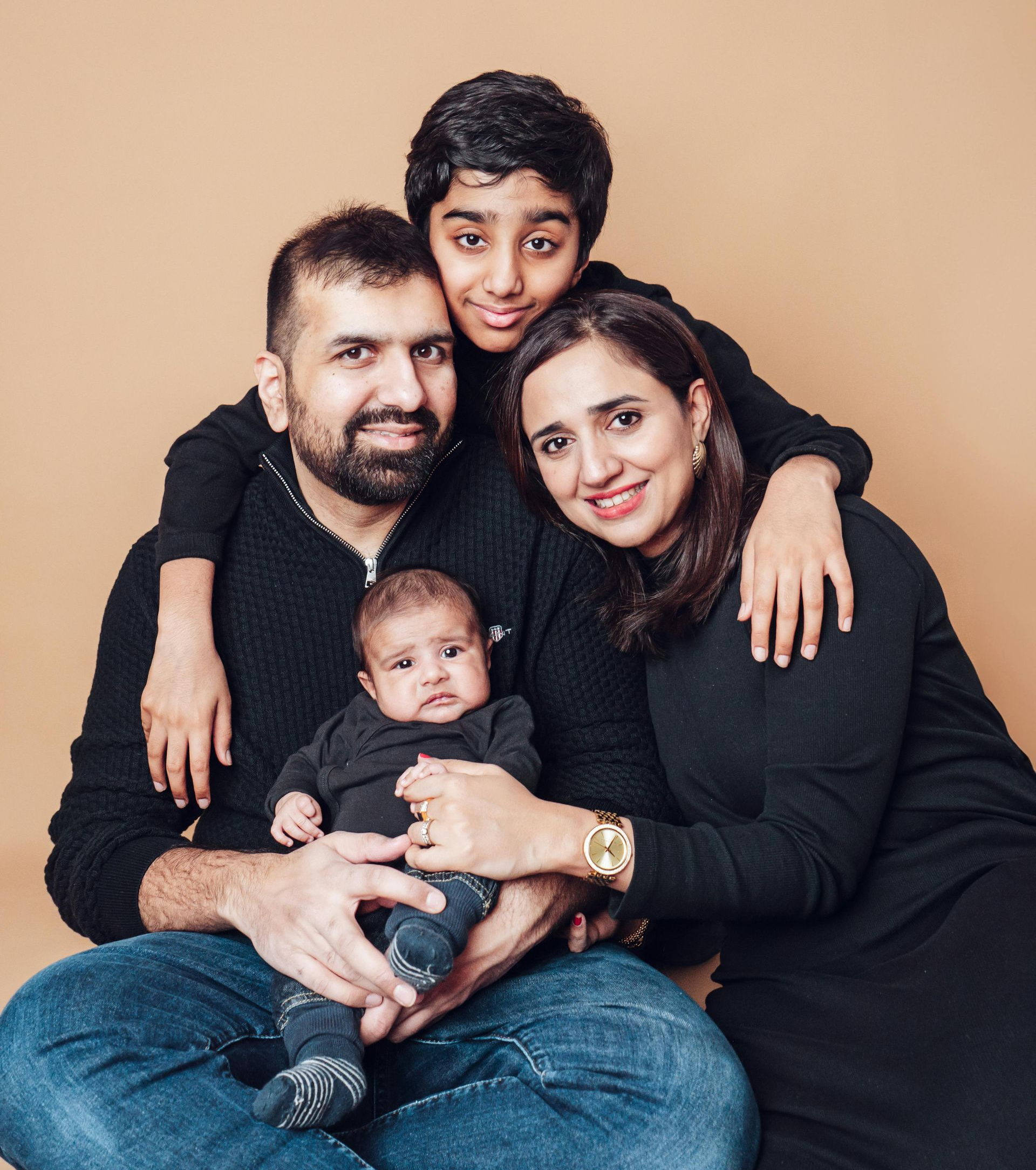Assessment of Children's learning and development
Understanding Assessment in Early Years
The role of assessment in helping parents and practitioners
recognise children 's progress
By Shamima Fowzee | Early Years Trainer & Creative Art Therapist
What to find in this article
- What does assessment mean
- Understanding assessment in early years
- Important of assessment in early years
- Benefits of assessment for parents and practitioners
- Different assessment methods and techniques
Assessment is the ongoing process of collecting, documenting, reflecting on, and using information to develop rich portraits of children as learners in order to support and enhance their future learning.
ASSESSMENT IN EARLY YEARS
When practitioners in early years conduct assessments, they are able to find out what children understand, how they think, what they are able to do, and what their interests and needs are. This information helps the EYP in supporting children's continued learning and development by offering continuous feedback regarding their progress, creating challenging and enjoyable experiences for them, choosing appropriate supports for them, and planning the next steps in their learning through documentation.
Assessment for learning and assessment of learning are two approaches to assessment. The two differ in how the adult uses the information he/she collects. The main purpose of assessment of learning is to inform others, like parents and professionals such as therapists, about children’s achievement. Assessment for Learning focuses on using assessment information to help children with the next steps in their learning and development. While both approaches are important, these guidelines focus on the adult using assessment on a daily basis to help children progress in their learning and development.
IMPORTANCE OF ASSESSMENT IN EARLY YEARS
Assessments provide a record of growth in all developmental areas and can be used to plan activities with the right level of challenge. Practitioners can use different assessing ways, such as tracking charts, learning journeys, and development checklists, to assess children's progress within key areas of development. These areas often link to frameworks like EYFS, which sets developmental milestones from birth to five. Through assessment, practitioners identify if a child is ahead in some areas of development or requires extra support in certain skills. For example, if a child can stack two blocks confidently, the next step might be encouraging the child to build a tower of three or four blocks. Practitioners assess the child's skills and holistic development and use the records to plan activities with the right level of challenge. They can modify their teaching strategies through assessing each child's progress.
Reflective practice and continuous improvement. Assessment does not only benefit children, but it also supports practitioners to improve their teaching. Reflecting on what works well and what does not work well helps the practitioner grow professionally. It also involves thinking about past interactions, activities, and assessed outcomes to improve future plans. For example, a practitioner might review an activity they delivered and reflect on it:
Did each child participate in the activity?
What did each child gain from the activity?
Was the activity sufficiently interesting and enjoyable for each child?
Were there any issues that you had not considered?
Supporting children with special educational needs. Assessment information can alert the EYP to potential difficulties experienced by children. By bringing concerns to the attention of parents and other professionals, the EYP plays a critical role in helping to access appropriate supports to enable children to progress in their learning and to limit the potential impact of the disability or difficulty on future learning and development. The supports may include putting a specific learning program in place for a child. This might be based on an Individual Education Plan (IEP).
Promoting inclusion and equal opportunities. Inclusion in early years is promoted by creating a welcoming environment where all children feel accepted and valued. Every child should have equal opportunities to realize their potential, no matter their background or abilities. Assessment helps practitioners create an inclusive environment by recognizing children with additional needs or potential barriers to learning. It enables practitioners to modify activities, ensuring that they are accessible to all. For example, you might work with a child with learning differences whose family is also learning English. Or think about children who are learning English as a new language. Or a child with a physical disability might require adapted equipment to perform certain tasks comfortably.
Support working in partnership with parents. Assessment plays an important part in helping parents, carers, and practitioners to recognise children’s progress, understand their needs, and plan and provide activities and support. Provide a common ground between educators and parents or families to use in collaborating on a strategy to support their child.
Reflective of the needs of individual children.
It involves practitioners knowing what children can and can’t do and then shaping teaching and learning so that children develop the broad range of skills, knowledge, and attitudes they need as foundations for future progress. The various forms of evidence enable practitioners to make informed judgments about individual children's stages of development and plan for appropriate next steps for learning.
Plan for individual children’s needs according to their needs and interest.
Assessment helps EY practitioners to plan for a child or for a group of children that are at the same stage of development according to their needs and interests. For example, for a child struggling with language development, practitioners may plan simple activities like storytelling or group conversations.
BENEFITS OF ASSESSMENTS FOR PARENTS/CARERS
Finding out how children are developing is the purpose of assessment. Understanding their interests and how to support their continued learning is beneficial. It has numerous benefits for both parents and educators, including the following:
Encourage parents/carers to take an active role in their child’s play, learning, and development. When parents are involved in the assessing process, such as sharing photos and information about their child's development at home, they will see a different side of their child at home than in the setting. They will also know what type of things their child enjoys doing in the setting. It is therefore important to work with parents in ways that will allow parents to take an active role in this aspect of their child's development.
Help parents to understand their child's development. Parents and caregivers can learn a lot about their child's development from assessments. Specific strengths, like communication or problem-solving, as well as areas that can benefit from more support, like fine motor skills or social interactions, are highlighted in these assessments. Parents may not always know what developmental milestones are, so knowing this information also helps them understand their child's needs and skills.
Enhancing the bonds between parents and practitioners. When parents or caregivers are informed about assessments, they feel more involved in their child's early education. Through this assessment-based procedure, parents can feel informed and comforted that their child is in capable hands.
Encourage parents to participate in their child's learning. Parents who are aware of their child's assessments are more likely to participate in their education at home. For instance, if an assessment reveals that a child loves to tell stories but has trouble with early phonics, parents may include stories that highlight rhymes or word patterns. For the child, this makes learning more engaging and meaningful.
Help parents to recognize potential development challenges or delays. Regular assessment helps parents to recognise potential development challenges or delays early. Identifying needs early often makes a substantial difference in improving outcomes for children.
Support parents to feel confident in their parenting abilities.
Parents find themselves more secure in their parenting skills when they are aware of their child's development and steps being taken to promote learning. Parents can feel more confident in their approach when they receive information on their children's progress.
TYPES OF ASSESSMENTS
The most common types of assessment are initial, formative, and summative assessment. As an early years practitioner, you might be familiar with these terms but still need clarification about how they work.
Initial Assessment:
Each child is unique, and they have different knowledge , skills, experiences, and expectations. Initial assessment is important when we work with a child for the first time. Initial assessment helps practitioners to identify a child's level of knowledge, what skills they already have, and if any extra support they might need. For example, when a child is about to enter a preschool setting, the parents will provide essential care information about a child’s current needs. It is obviously essential to formally record this information, but even more important is to treat this as an opportunity to begin building a strong partnership with the parents. As the child’s first teachers, they have unique information to share about the child’s learning and progress to date. This is not included in the EYFS and is not a statutory requirement.
Formative assessment:
Formative assessment is an ongoing process of gathering , analysing, and using information about a child’s learning and development during their daily activities. Formative assessment is often referred to as “assessment for learning.”
Summative assessment: Summative assessments are made to provide a summary of a child’s development and learning across all areas. When daily interactions involve observing, reflecting, and deciding how best to support a child, practitioners hold in their minds many details of each child’s development and learning. At certain times it is important to step back, to pause and reflect, and create a summative assessment that takes a holistic overview of the child’s development, learning and progress.
DIFFERENT ASSESSMENT METHODS & TECHNIQUES
Assessments play a crucial role in ensuring the success of early years. By measuring a child's progress against developmental milestones, assessments help practitioners to identify areas where children are meeting their milestones, where they are excelling, and where they may require additional support to inform planning. Let's briefly review some of the options more commonly used to assess children's development.
Observations:
Observing children during play and other activities is one of the most effective methods of assessing their progress. Both indoor and outdoor environments can be used for observation, and it can be documented. Observations help in determining if a child has reached developmental milestones or needs further work. For example, if a toddler struggles to string words together, this might indicate the need to focus on language skills.
Depending on the purpose, there are various ways to perform observation. There are many different types of observations, including time sampling, event sampling, and narrative observations. Every technique offers important insights into the child's development.
Learning Journeys:
Learning journeys are records of a child's development or progress over time. Practitioners will take photographs of the child, written observations, and examples of work. Learning journeys are shared with parents, and parents can add in their own observations. Reviewing learning journeys, practitioners can identify patterns in a child's development and include ideas for planning activities and support based on the observations. For example, if a child shows an interest in building wooden blocks, practitioners can introduce counting activities using those blocks to develop mathematical development.
Anecdotal records:
Anecdotal records are short, focused observations written down as they happen. An anecdotal record is "an informal observation method often used for understanding the child's personality or behavior. It provides a running that is either typical or unusual for the child" (Bentzen, 2009, p. 178). It is an excellent tool that provides practitioners with a collection of narratives that can be used to track a child's progress over time. The practitioner records a significant piece of learning, perhaps the first steps a baby takes unaided or an important development in relationships with other children. Using these records, practitioners can reflect on how to encourage further development.
Checklists:
When a practitioner wants to look at a child’s overall development, checklists can be a very useful tool to determine the presence or absence of a particular skill, milestone, or behavior. Checklists or tick charts are tools to quickly track a child's achievements against developmental milestones. These are particularly useful for ensuring no area of learning is overlooked. Practitioners will observe children during playtimes, circle times, and centers and will check off the skills and behaviors as they are observed. Checklists help to determine which developmental skills have been mastered, which skills are emerging, and which skills have yet to be learned.
Work samples or portfolios:
A work sample is a tangible piece of evidence that showcases a child’s effort, progress, and achievement. More specifically, not only does a work sample highlight the final product, but it can highlight the process as well by highlighting the child’s problem-solving efforts, experimentation methods, or collaboration skills. Work samples are authentic artifacts that provide information about the child’s learning experience. Typically, you would collect a variety of samples that highlight the child’s overall development in each of the developmental areas: Physical; Cognitive; Language; Social -Emotional. More specifically, you might include a child’s drawing or painting, a writing sample from their journal, a cutting sample, or photographs of the child engaged in activities such as building a block tower or sandcastle or riding a bike. Work samples should be organized in a chronological manner to showcase progress over time. For example, a child's drawn self-portrait might show the development of fine motor skills. By adding new samples regularly, practitioners can easily review growth in abilities and changing interests. Be sure to store work samples in a safe place like a file folder or portfolio or electronically in a computer file.
Using Technology:
There are numerous ways to incorporate technology for collecting observations. Use a camera, laptop, tablet, or smartphone to record observations and take pictures. Ask a child to dictate a story, and you can type it up on a computer or use an audio recorder. Video, and audio recordings can authentically capture children’s explorations, investigations, play, and learning experiences in the actual moment. With this type of documentation, teachers can replay key moments in a child’s day to look for specific interactions, play patterns, developmental milestones, and struggles. For example, look at playful interactions to track social-emotional development; watch children on the playground to track physical development; observe how children tackle science or math activities to track cognitive development. Using such tools ensures assessments are accurate and easy to review later. (Note: it is important to be aware of center policies and procedures regarding proper consent before photographing or taping a child.).
FINAL THOUGHTS
With each assessment method, whether an anecdotal report, video recording, checklist, or work sample, practitioners are watching and listening and considering,
What do I know about the child, and how can I best support this child?
Understanding different assessment methods and techniques gives practitioners the tools to monitor development and support each child.
Welcome
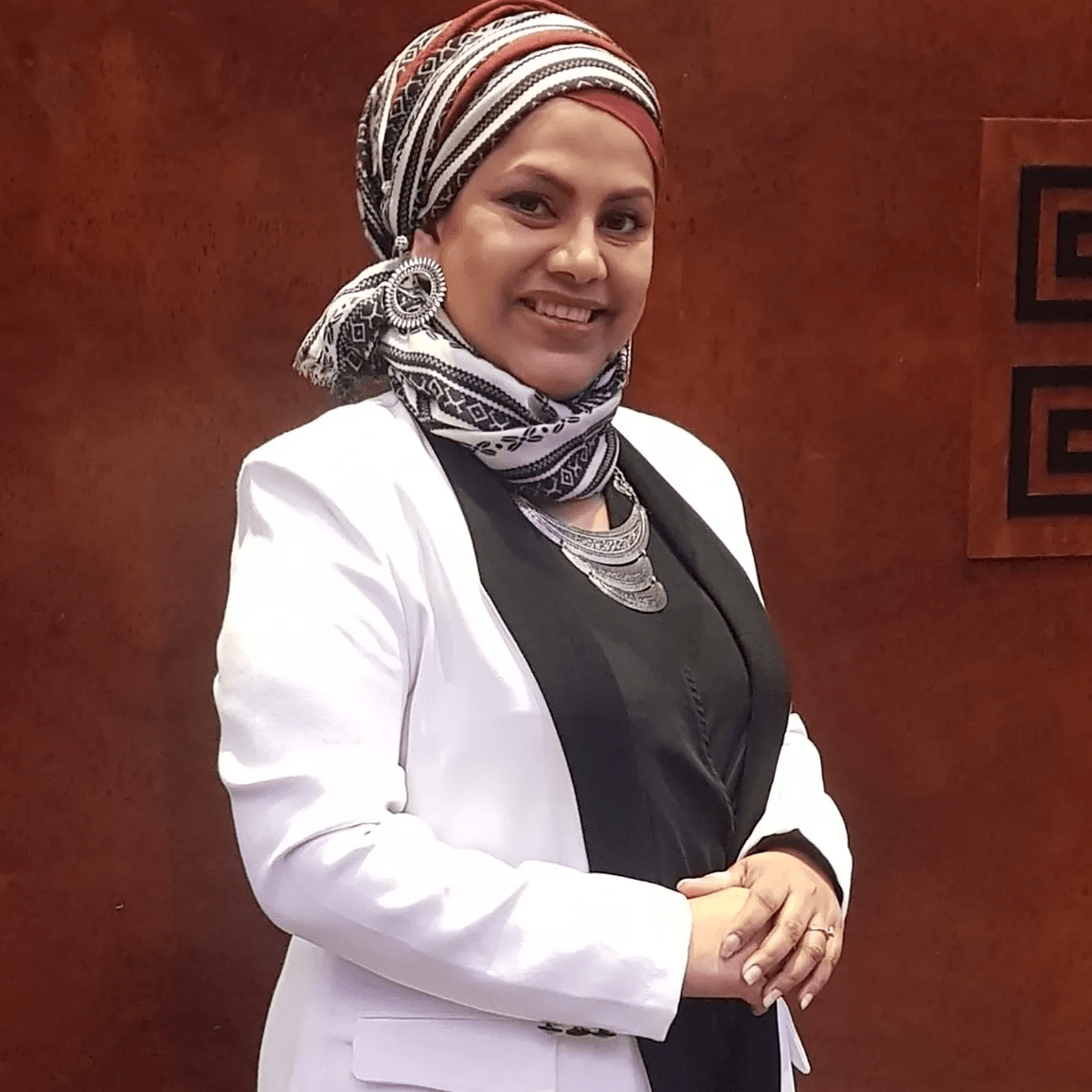
Hi, i am Shamima Fowzee, an early years educator, trainer and consultant. I Share ideas, inspiration, & resources for play-based, inquiry-led learning. Find out more about me here.
SHOP NOW
RECENT POST
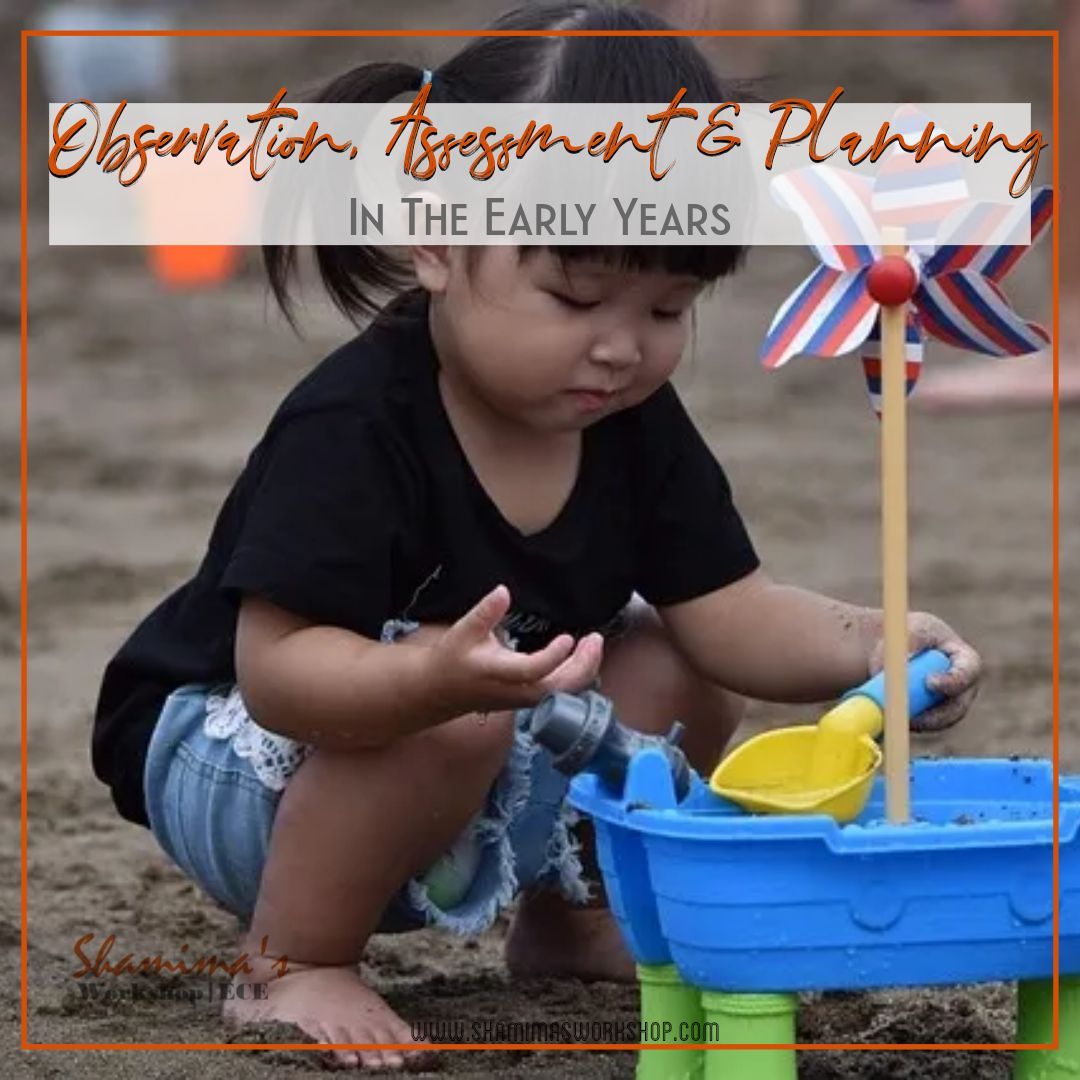
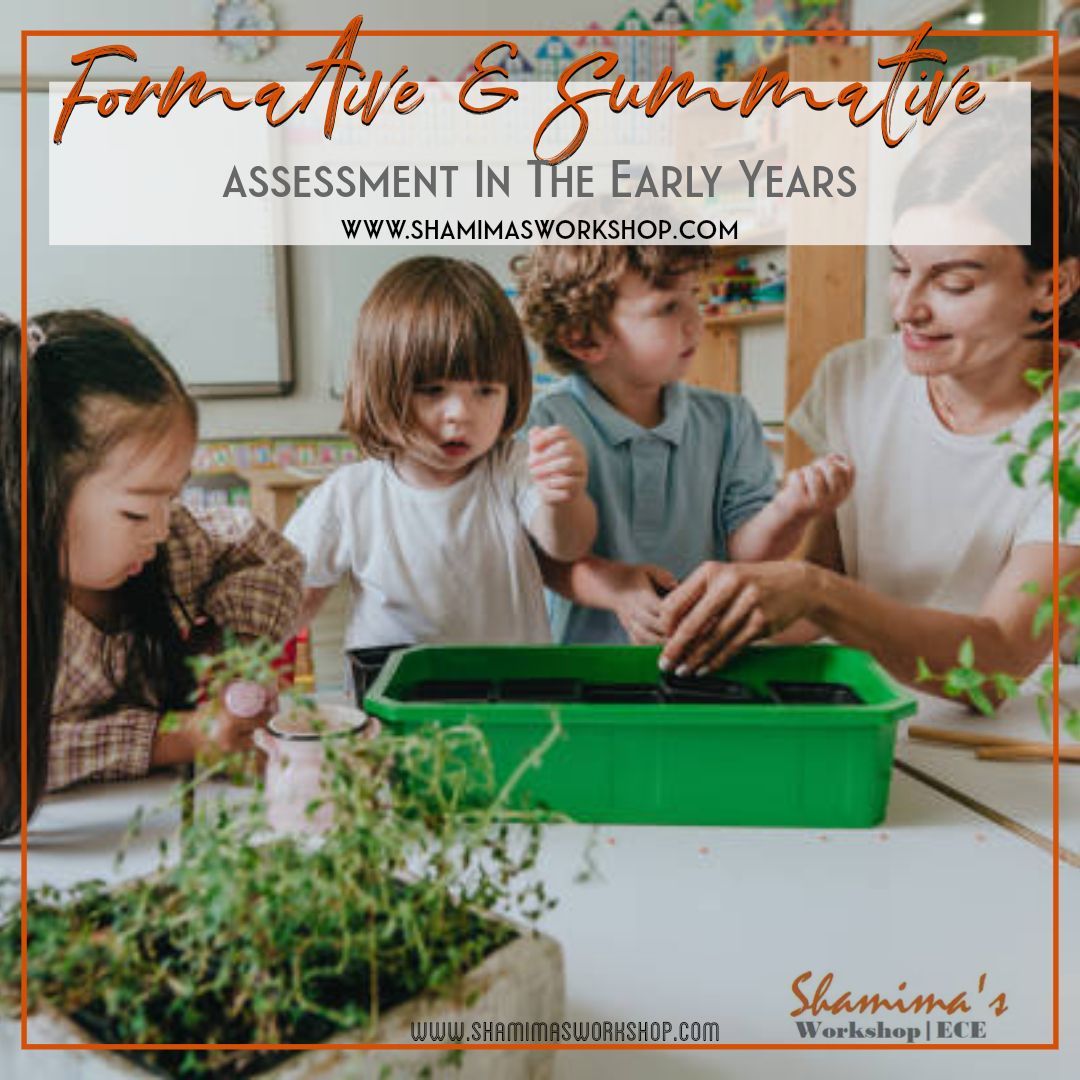
How can I thank you? Spread the word!
For everyone who is passionate about the importance of Early Years.

